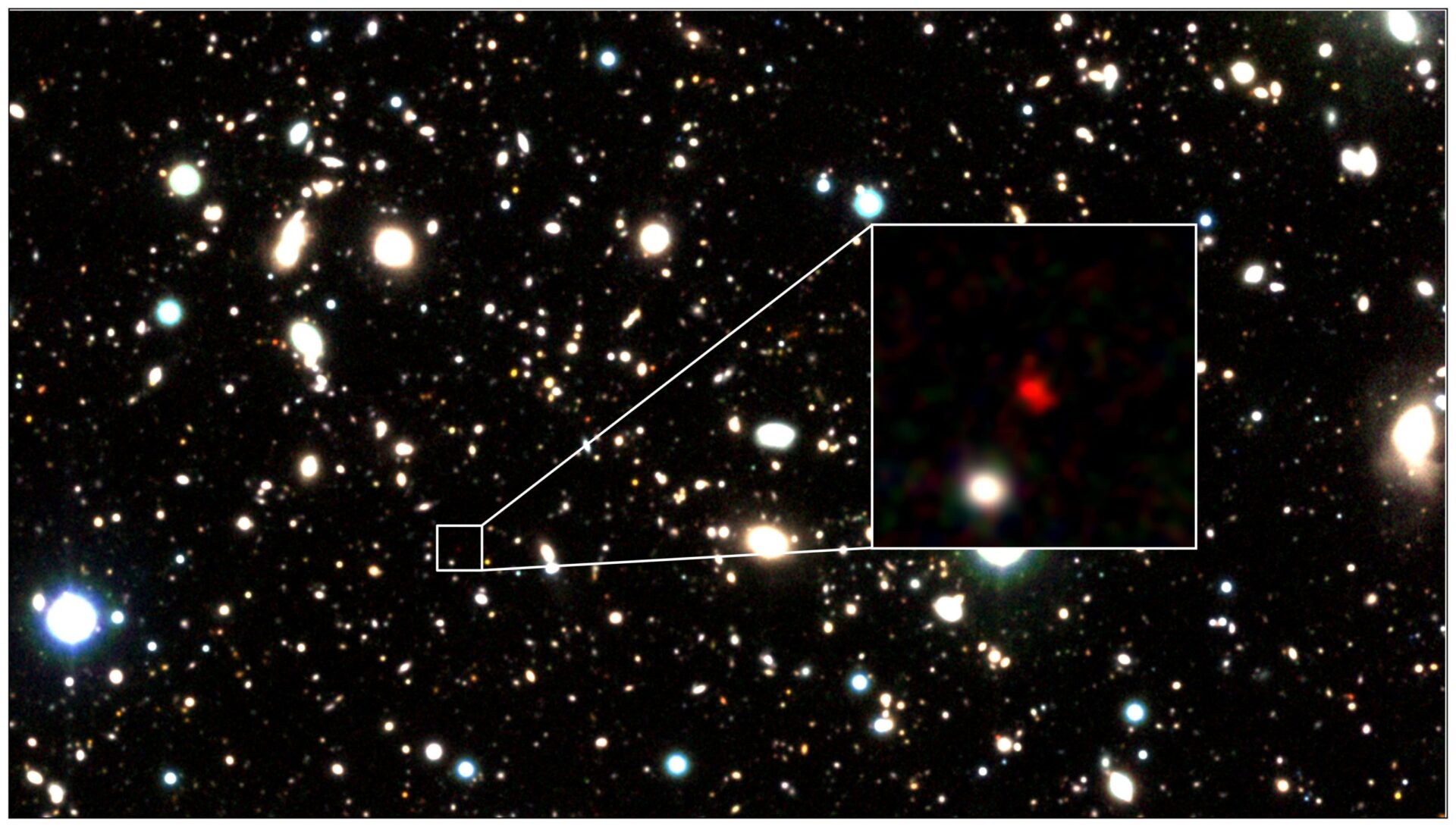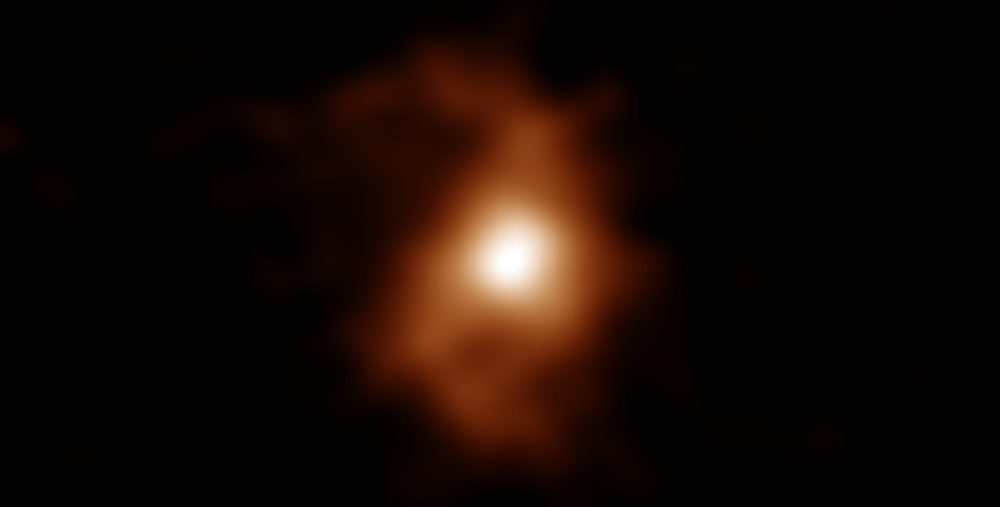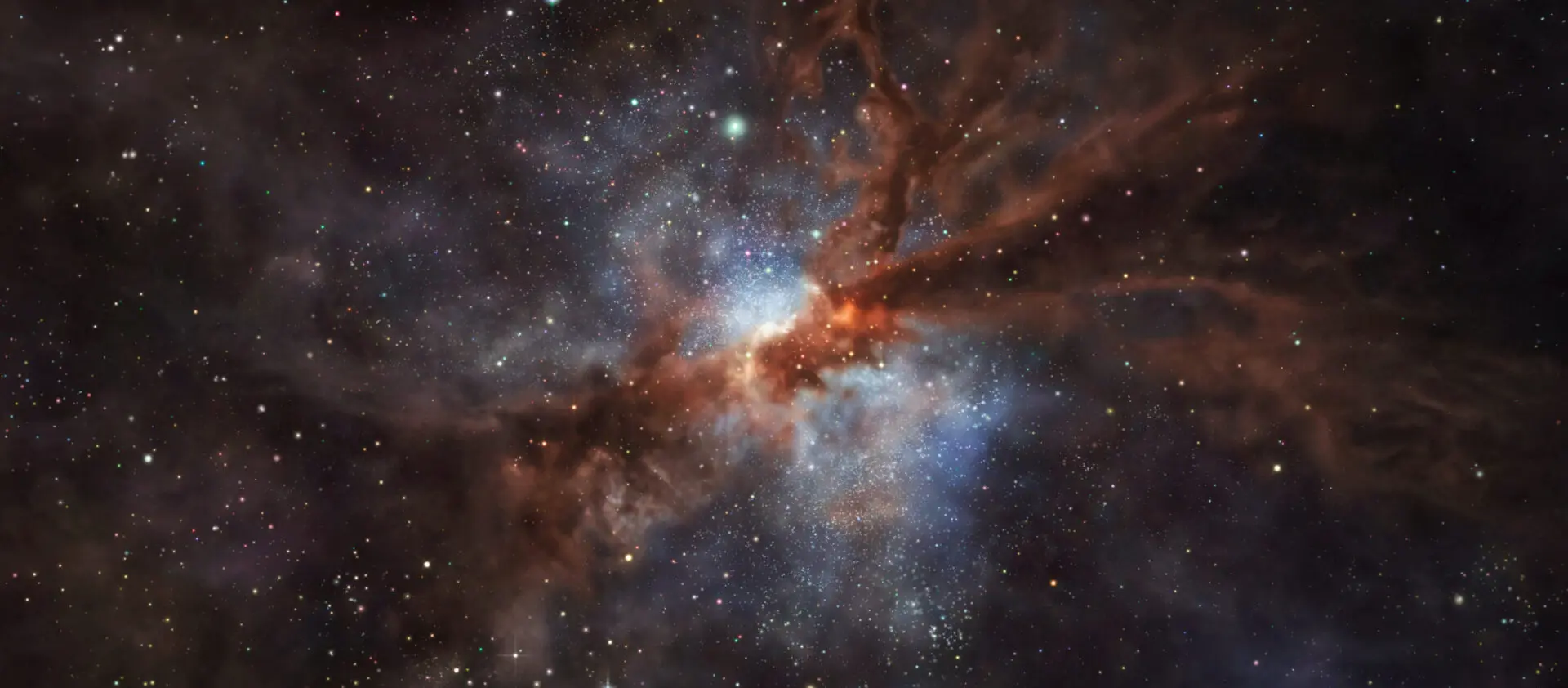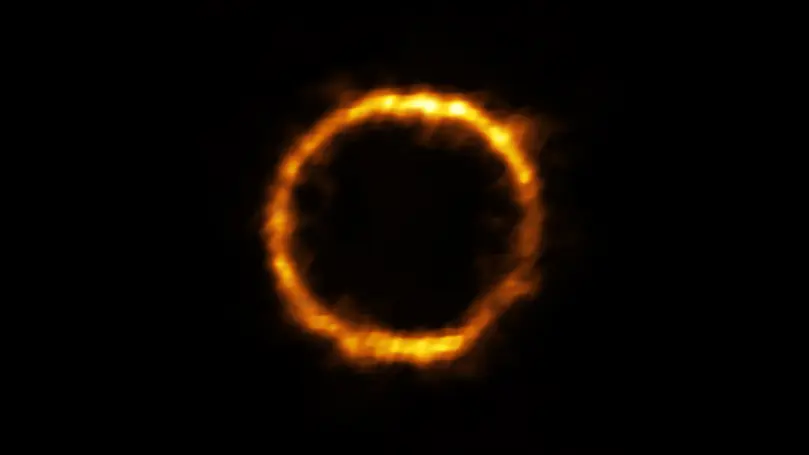Astronomers Detect Most Distant Galaxy Candidate Yet
An international astronomer team has discovered the most distant galaxy candidate to date, named HD1, which is about 13.5 billion light-years away. This discovery implies that bright systems like HD1 existed as early as 300 million years after the Big Bang. This galaxy candidate is one of the James Webb Space Telescope (JWST) targets launched late last year. If observations with the JWST confirm its exact distance, HD1 will be the most distant galaxy ever recorded.
To understand how and when galaxies formed in the early Universe, astronomers look for distant galaxies. Because of the finite speed of light, it takes time for the light from distant objects to reach Earth. The light we see from an object 1 billion light-years away left that object 1 billion years ago and had to travel for 1 billion years to reach us. Thus studying distant galaxies lets us look back in time.
The current record holder for the most distant galaxy is GN-z11, a galaxy 13.4 billion light-years away discovered by the Hubble Space Telescope. However, this distance is about the limit of Hubble's detection capabilities.
HD1, a candidate object for the earliest/most-distant galaxy, was discovered from more than 1,200 hours of observation data taken by the Subaru Telescope, VISTA Telescope, UK Infrared Telescope, and Spitzer Space Telescope. "It was tough work to find HD1 out of more than 700,000 objects," says Yuichi Harikane, who discovered HD1. "HD1's red color matched the expected characteristics of a galaxy 13.5 billion light-years away surprisingly well, giving me some goosebumps when I found it."
The team conducted follow-up observations using the Atacama Large Millimeter/submillimeter Array (ALMA) to confirm HD1's distance. Akio Inoue, a professor at Waseda University, who led the ALMA observations, says, "We found a weak signal at the frequency where an oxygen emission line was expected. The significance of the signal is 99.99%. If this signal is real, this is evidence that HD1 exists 13.5 billion light-years away, but we cannot be sure without a significance of 99.999% or more."
HD1 is very bright, suggesting that bright objects already existed in the Universe only 300 million years after the Big Bang. HD1 is hardly explained with current theoretical models of galaxy formation. Observational information on HD1 is limited, and its physical properties remain a mystery. It is thought to be a very active star-forming galaxy, but it might be an active black hole. Either possibility makes it a fascinating object. In recognition of its astronomical importance, HD1 was selected as a target for the Cycle 1 observations by the James Webb Space Telescope, launched last year. Yuichi Harikane, who is leading these observations, says, "If the spectroscopic observation confirms its exact distance, HD1 will be the most distant galaxy ever recorded, 100 million light-years further away than GN-z11. We are looking forward to seeing the Universe with the James Webb Space Telescope."
Additional Information
This research will be published in the April 8, 2022, issue of The Astrophysical Journal as Yuichi Harikane, et al. "A Search for H-Dropout Lyman Break Galaxies at z~12-16". This work was supported by the Japanese Ministry of Education, Culture, Sports, Science and Technology (MEXT), the Japan Society for the Promotion of Science (17H06130, 19J01222, 20K22358, 21K13953), and the NAOJ ALMA Scientific Research Grant (2020-16B).
The original image release was published by the National Astronomical Observatory of Japan (NAOJ) an ALMA partner on behalf of East Asia.
The Atacama Large Millimeter/submillimeter Array (ALMA), an international astronomy facility, is a partnership of ESO, the U.S. National Science Foundation (NSF) and the National Institutes of Natural Sciences (NINS) of Japan in cooperation with the Republic of Chile. ALMA is funded by ESO on behalf of its Member States, by NSF in cooperation with the National Research Council of Canada (NRC) and the Ministry of Science and Technology (MOST) and by NINS in cooperation with the Academia Sinica (AS) in Taiwan and the Korea Astronomy and Space Science Institute (KASI).
ALMA construction and operations are led by ESO on behalf of its Member States; by the National Radio Astronomy Observatory (NRAO), managed by Associated Universities, Inc. (AUI), on behalf of North America; and by the National Astronomical Observatory of Japan (NAOJ) on behalf of East Asia. The Joint ALMA Observatory (JAO) provides the unified leadership and management of the construction, commissioning and operation of ALMA.
Images
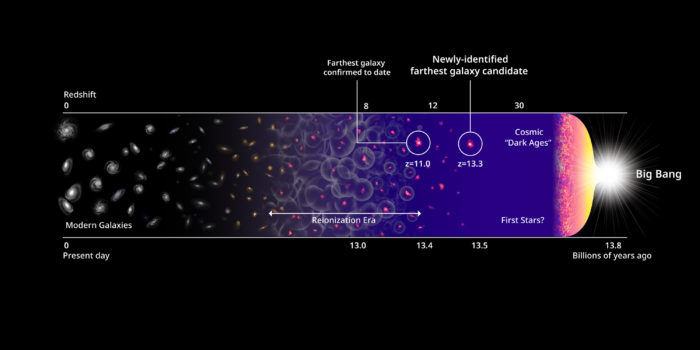
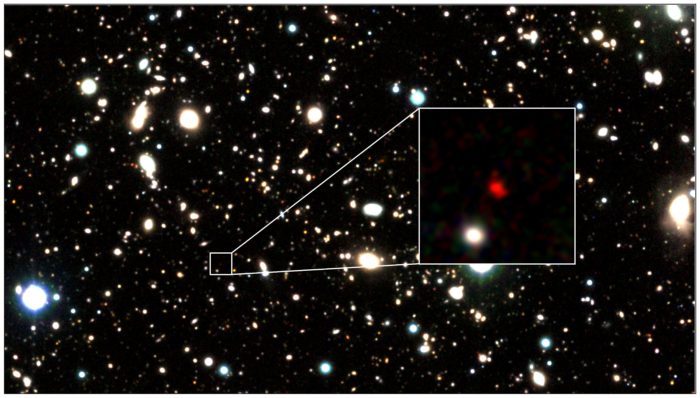
Contacts
-
Nicolás Lira
Education and Public Outreach OfficerJoint ALMA Observatory, Santiago - ChilePhone: +56 2 2467 6519Cel: +56 9 9445 7726Email: [email protected] -
Daisuke Iono
Interim EA ALMA EPO officerObservatory, Tokyo - JapanEmail: [email protected] -
Amy C. Oliver
Public Information & News Manager -
Bárbara Ferreira
ESO Media Manager
